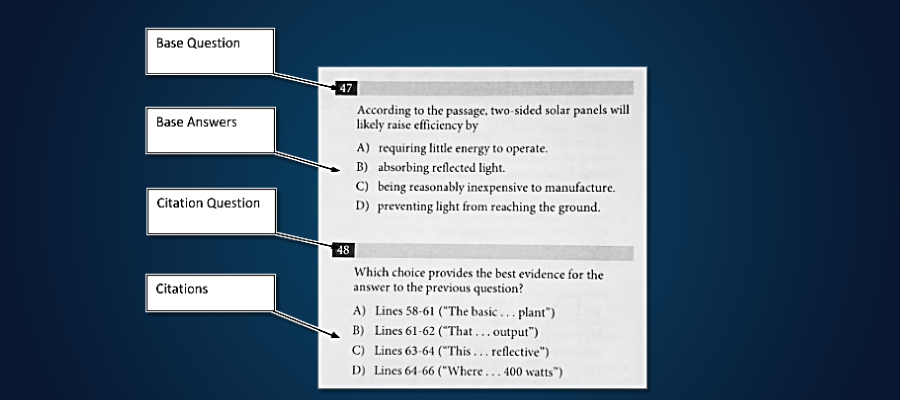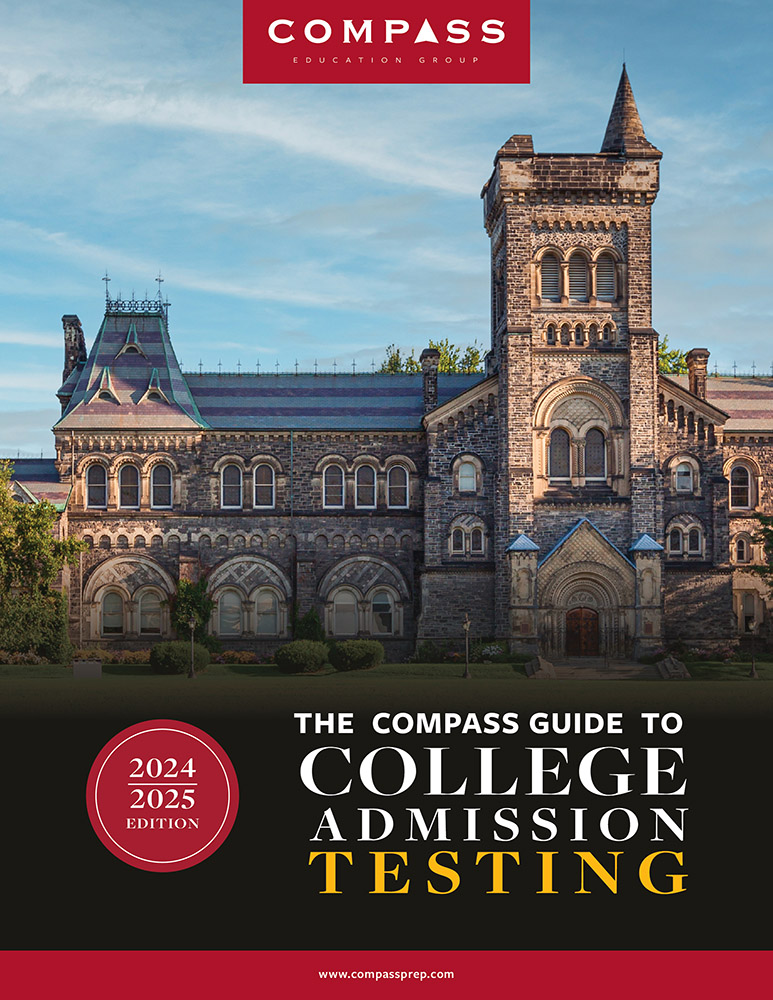The SAT’s multiple sections and wide range of topics can feel overwhelming, but don’t panic: the SAT tests some concepts over and over (and over!) Master the five types of questions below, and you’ll have mastered much of the verbal side of the test.
- Citation questions. Citation questions usually form pairs: one ordinary-looking question, and then something like this:

Citation questions built into the SAT’s subscore system, so expect two per passage in the Reading section. Add in the base questions and that’s 18-20 citation-related questions per section. Mastering them really pays off! Need help? Check out our quick guide to citation questions.
Vocabulary in context. These Reading section questions are always phrased in the same way: “As used in line 27, ‘particular’ most nearly means,” typically followed by a list of one-word answers. Contextualize carefully and you’ll pick up one to two questions per passage.
- Punctuation. Punctuation is by far the most commonly tested grammatical topic on the Writing and Language section. Set up a flashcard app on your phone and drill punctuation daily for just 5 minutes, and soon you’ll have mastered a big chunk of the test.
- Transitions. Some transition questions test individual words: do you need a “however” here, or is this more of a “furthermore” situation? Others test transitional sentences or phrases. Overall, they show up about twice per passage on the Writing and Language section, so they’re worth careful attention.
Graphics. You’ll typically see 2 graphics on each Reading section and 1-2 on Writing and Language, usually with multiple questions per graphic. That’s a lot of points up for grabs! Check out our graphics tips and tricks and learn the first thing you should check.

